|
This expat life can feel like a circle of never-ending goodbyes and welcome backs. June weekends were a series of goodbye and see-you-soon parties in Da Nang. It was similar to the end of the school year in college, with some friends graduating and leaving for good and others coming back for classes in the fall after a summer internship or study abroad. July was full of welcome home gatherings in Michigan. Before I knew it, July was over and I was saying goodbye to Michigan. If it weren’t for the long plane ride I’d pretend I merely snapped my fingers and found myself drinking La Rues with friends at a beachside bar in Da Nang again, but I’ve been taking baby aspirin to deal with the delayed swollen ankles. Yes, I wear compression socks, and no, they aren’t the most fashionable item in my wardrobe. July has been compartmentalized in my head. I saw mostly everyone I wanted to see and did most of the things I wanted to do. I bonded with my family and my doggy and ate Mexican food and fresh northern berries and drank lots of good beer. I crammed a year’s worth of shopping and doctor’s visits into a month, and my credit card statement reflects it. In July, I found myself confused as to what place to refer to as “home” in conversation. Da Nang or Grand Rapids? When in Grand Rapids, my parents’ condo that I’ve never lived in full time, or the condo I’m renting out to near strangers? It kept coming out wrong. When I got off the plane in Chicago, I immediately noticed that everyone is bigger in America than in Asia. There are a greater variety of shapes and sizes and colors of human beings. People didn’t look at me as much—I blended in for the first time in a year. Throughout the month, I enjoyed people watching and eavesdropping in a language I could understand; however, I found myself more easily distracted in public simply because I knew what everyone around me was saying and couldn’t NOT hear it. I remembered how to drive a car, no problem (many people asked about this). I got cold more easily and cursed the insanely high A/C settings businesses use. Why should I have to wear a sweater, long pants, and socks in a cafe when it’s 80 degrees outside? I don’t want to think about what will happen to me my first winter back. The people I know had changed a little bit, but mostly not. Same with me, I guess. Perhaps I move slower now. I don’t walk as quickly—I was always a bit of a speed walker—and my family decided I was, in general “more chill” (my sister’s words). The former I’d attribute to the heat of the tropics; the latter to not working 50+ hours a week and heaps of time for introspection. Much as an insert causes a magazine to always open to the same page, permanently divided it into chunks, so did my month-long visit home divide my time in Vietnam into two halves, Year 1 and Year 2. While in Michigan, I pulled out the insert and lived that bit, leaving this hypothetical magazine resting open on the coffee table. It allowed me to look at my Vietnam experience with candid distance, seeing it for what it is—a chapter in my life. The pages in the first part, Year 1, are dog-eared and crinkled from too much wear. Damn, did I search hard for Meaning and Purpose and Justification for the Experience and some List of Important Stuff To Do With Myself last year. None of these things were buried in the table of contents, nor were they hidden in the bright ad on p. 18. My point is, I found peace in returning to Michigan. I basked in what is perhaps the best month to be home but was reminded that things aren’t perfect there, either. My struggle with purpose wouldn’t suddenly be settled if I were to stay in Michigan this year. In fact, as hard as it was to say goodbye to my family and my dog yet again, going home solidified my decision to do another year in Vietnam. I’m not done with this issue quite yet. This year, I’m going to try to read the articles and look at the pictures in the second half, Year 2, appreciating them for what they are, and move on. Plus, the first half of a magazine is often full of blurbs and short articles, easing readers in. I have a feeling the real meat—the features and the lengthy spreads—will come this year. Phil (my boyfriend) once told me that cliches are cliches because they’re often true. Going home reminded me that “home is wherever you are”—and not in the cheesy-but-romantic Edward Sharpe and the Magnetic Zeroes song way, because that way requires you to be dependent on someone. I prefer to think this adage means that you can choose to take home with you. My spirit animal, at least for this time in my life, is a butterfly. Make fun of me all you want, but my cousin took a few of my family members on a little mental journey, and that’s the animal that stuck with me. Butterflies are all about times of transition and embracing change. They take their home with them, finding shelter wherever they happen to be at night or if the weather gets bad. Butterfly totems also encourage people to approach change from a place of lightness, with a lighthearted and playful attitude. They remind us that life is a journey to be experienced with as much grace and joy as possible—whether you’re being flooded with goodbyes or welcome backs. I’ve always been better at being light and playful with others; I tend to be more serious with, and sometimes even hard on, myself. Why not give myself a break and take it in, trusting that what’s meant to be will be, and enjoying the beauty of this colorful dance as I go, hmm? That’s my goal for this year.
1 Comment
I’m sitting here, on the other side of the globe from my home, boiling on the outside and the inside. It’s hot here. We’ve been over this. It’s not really worth saying, but even the Vietnamese are talking about it, maybe because they see my red cheeks and notice me dripping with sweat. Whatever. My place is air conditioned and has a shower. The solutions are clear. I’m boiling on the inside because I’m angry. This problem is not as easily resolved. I’m mad about what’s been happening in my country, thousands of miles away. I’m frustrated by much of the tenor of the conversation taking place online about recent incidents, both among my compatriots and the local expat community. As Dr. Roxane Gay wrote (and I posted to my Facebook page) in an article for The New York Times: “…anger is not an inherently bad thing. Most of the time, it is a normal and even healthy human emotion. Anger allows us to express dissatisfaction. It allows us to say something is wrong. The challenge is knowing the difference between useful anger, the kind that can stir revolutions, and the useless kind that can tear us down." In an attempt to channel this anger, I’m going to get organized about it. Using subheadings. Struggles with Feminism in a Selfie State I read Bad Feminist by the above-mentioned Roxane Gay a few weeks ago and may or may not have begun blowing steam out of my nostrils in the process. Bad Feminist is a collection of essays. It’s a slightly higher brow version of Sex, Drugs, and Cocoa Puffs meeting modern day feminism. I didn’t love it, but I definitely didn’t hate it, and it made me think, for which I’m thankful. However, the anger that arose in me during the process wasn’t the most productive. I found myself frequently shooting daggers at unknowing victims from behind my sunglasses. The thing is, patriarchy is alive and well in Vietnam. It is in America, too, but I feel comfortable questioning the society and the structure that I was born into. Here I mostly observe and feel frustrated or angry and then guilty for that emotion, because it implies judgment. And then the cycle begins again. In Da Nang, I see women working on construction projects alongside men with more frequency than I do in America. I also rarely see groups of women out after dark—they get dressed to the nines and meet at cafes during the day. At night, it’s mostly co-ed groups, families, or large groups of men drinking together. I have to imagine that most of the women are at home. Many Vietnamese women don’t drink. For Vietnamese men, drinking is practically a competitive sport. One inebriated Vietnamese man, a stranger, asked me how many beers I could drink before I absolutely had to stop. I told him that’s not my goal when I drink. He pressed. I said, “I’m not sure…it depends over what period of time.” He stared at me with glassy eyes. “Maybe 6?” I ventured. He laughed. “That’s nothing!” It’s highly likely I weighed more than this man. And if he was being honest, his true max number of beers was whatever number he was on at that point. Vietnamese women run businesses and manage restaurants. They also take so many photos I don’t know how their devices have room for them all. Perhaps that’s their competitive sport. How many selfies can you post in a day? At first I stared when a table full of young Vietnamese women were ignoring one another, favoring the company of their own faces reflected back to them in their screens, peace signs out, chins down, duck faces ready, smirks, winks, attempts to be cute. Mostly I ignore it now. But the other day I tried not to laugh when women wearing their work uniforms, white ao dai, took turns posing next to some wall art—actual cameras hanging in a grid formation— in one of my go-to cafes. Did they not recognize the irony? And what does this selfie culture say about a society? That someone’s filtered face is their most important representation, or should I say iteration? That this is the way for women to form an identity? I’m not above the occasional selfie, I admit it. I want to document things and sometimes a selfie is the easiest (or only) way—though I usually have someone else in the frame with me. It’s more the need to document every waking second, through photos of your own face, that I have a problem with. What about turning the camera around and paying attention to what’s in front you? At a more serious level, there are all the stories of massage places that offer “happy endings” and other shady establishments that employ some form of sex workers. It’s real, folks. The expats I know only frequent legitimate spas that have big, open lobbies and/or online presences and/or have been vetted by friends. It’s easy to avoid thoughts about young women being exploited because of an exchange rate that works in the favor of many in the Western world—and equally as easy to feel sick imagining the circumstances that would lead to a woman doing this type of work. There’s an analogy in Vietnamese culture that compares women to food: rice is a man’s loyal wife, and noodles are his sexy mistress. This (informative) article on the history of pho makes light of it—but trivializing affairs, and presuming that only men have them, also says something about the culture, does it not? I can’t say with any sort of authority. It’s just an observation. But I do feel comfortable with a commentary on the expat community. I’m not sure why, but I’ve noticed a certain type of self-important, middle-aged-and-older white man, usually while out on the town, who has chosen to live in Da Nang. Service standards and etiquette are different here—for example, in Vietnam it IS appropriate to shout across an establishment to ask for your server’s attention—but some people, often within the previously mentioned demographic group, take it too far. They’re condescending. They belittle the staff with zeal. Servers walk up to the table with a smile initially and by the end of the meal their eyes are on the ground and they’re shuffling around. These men complain loudly about being charged for butter with their pancakes even though they live in a country where butter is never used, it’s just an option for the foreigners that the place is trying to serve, and the menu lists the surcharge. They attribute any service error to the staff’s supposed lack of intelligence. They post a photo of female servers’ asses—who knows if these women actually knew the photo was being taken—in a photo album that is intended to document a stone skimming competition. This competition had both adult and child participants. They create X-rated bar trivia nights featuring riddles such as “What does a man have that’s in his pants, is approximately 8 inches long, and his wife always wants?” with the “correct” answer being “his wallet”. Because of course the man controls the money in every heterosexual marriage, right? Maybe the woman is the breadwinner and what she really wants is her husband’s dick. But that’s not the correct answer, get your mind out of the gutter, women don’t think about sex! This same bar owner pulls up YouTube and types “sexy women surfing bikinis” just to be sure that the images on the screens in his bar go with his overall theme of objectification. I want to shout, to call these people out, to tear them to pieces. But I never do. Would it do some good? Maybe. I’m not sure. Perhaps I’ll try it sometime. I’m usually too busy fuming, unable to construct an appropriate response through the red rush of adrenaline. Or maybe I’m scared of their reaction, of being called out as an angry feminist, so I’m resorting to writing my feelings rather than speaking them. People who are sexist are embarrassing themselves, whether they know it or not. That’s the little comfort I warm myself with when I’m angry with them and frustrated with myself, imagining digs I should have tossed out there while I’m lying in bed, unable to fall asleep. I’m trying to think of this boiling as a good thing. I just need to decide whether to make a soup or cook some potatoes or do something else with the pot on the stove before it boils over. How can I channel this rage into something productive? I’m really asking, and I don’t want answers like “take a kickboxing class”. If the answer is to speak up next time I see behavior like this, then I need to work on it, but I accept the challenge. If you’ve dealt with me for this long, any tips in the comments are appreciated! That’s enough verbal spewing for now. I’ll get to politics and current events as viewed through the “lens from abroad” at some point later on. Sorry for the plural “subheadings” promised above. Maybe I can be more organized next time around.
I could go on and on (and on) about our recent trip to Tokyo and Kyoto.
Mostly, we found that, as we gleaned from our limited studies and American popular culture, Japan is a place with a strong, specific culture. Every detail is considered, from the flower motifs on the manhole covers to the precise design of the public parks to the tiny origami that decorated shelves in shops. The scene that most typified Japan for us took place on the streets of Tokyo at night. We were walking from one place to the next and noticed a homeless man under a bridge. As we got closer, we realized that he was preparing for bed. He had a plastic set of drawers on wheels and put something away in the top drawer. Then, he proceeded to use the broom that was leaning against his wall—aka one of the bridge’s support beams—to sweep up his area. I thought, “Even the homeless are neat in Japan.” We told this story to a friend, who said, “That’s self respect right there.” People went above and beyond to help us. We met two Tokyo locals at a bar and they were our unofficial tour guides of the city the next day. They had broken English and a translation app. We spent quite a bit of time in comfortable silence. They brought us to places we never would have seen without them, including a cheesy 150-year-old amusement park where Phil won a stuffed cat pillow for throwing ninja stars (or shuriken…which is now the name of the cat pillow). In Shinjuku, we went to a second-floor bar in a gay district and were greeted in fast-talking Japanese by a man dressed like a flamboyant Varys from Game of Thrones. When we looked flummoxed, he said, “English OK?” We nodded, and the man behind the bar led us to a basement karaoke bar across the street, saying “English OK” as he held the door open for us. Weighed down by our bags in a part of Kyoto that was labeled as “hamlet” on my maps app, lost while trying to find our Airbnb, some neighborhood women noticed us and tried to help. It started raining, and one brought out an umbrella for us to stand under. We spoke English to her and mimed a lot—she spoke Japanese back and mimed as well. She found the owner of another guesthouse, who spoke some English and invited us inside so we could use her internet to try to find the place. The guesthouse owner was able to figure it out. It was just around the corner. The two of them walked us there. As with most countries, learning a few words helps. You probably already know a couple: arigato means thank you and sayonara means goodbye. Everything IS in Japanese, but you can find English. You just have to try. Go to the parks and eat all the sushi you can—conveyor belt to high-end. Drink Japanese whiskey and sake. Enjoy ramen and udon and get your breakfasts from the convenience stores to save room for lunch and dinner. Go to Shibuya and walk down narrow alleys next to love hotels, where they charge by the 20 minute interval. Enjoy the salarymen with bright red faces from alcohol bowing to one another as they part ways, taking different subway lines at midnight on a Wednesday. Check out the kitsch—it’s easy to find. If you go to Japan, your experience will likely be very different from ours. It should be. But if you have the chance, go. I don’t think you’ll be disappointed. Singapore is a lovely, clean, organized international city-state. It makes so much sense, with a fantastic MRT system and English spoken everywhere. It makes too much sense. Singapore is the living, breathing Mary Sue of SE Asia. It’s a manufactured place, and you can see the seams. This is perhaps best summarized through a series of photos of signs that Phil and I discovered while wandering around the city: Don’t get me wrong, Phil and I enjoyed our time there. We had a direct flight and went there over a weekend, so he didn’t have to miss any school. The purpose of the trip was for me to renew my tourist visa. I had two additional goals: to visit an English-language bookstore and to eat some Mexican food. Specifically queso. I found the bookstore, Books Actually, in a list of best bookstores in the world. Maybe my expectations were a bit too high. It was tucked into an odd area near the Singapore General Hospital that was part residential, part commercial. Well executed window displays oversold the contents of each shop we stepped into, all of them overly air conditioned, in yet another apt metaphor for the Red Dot. The bookstore itself was small and dense with notebooks, novels, poetry collections, literary journals, and the products of their own press. They played indie songs a few years past their due, the quirkiness both outdated and contrived. Phil and I spent quite a while in there, until we both realized that we were desperately searching for something to buy simply for the sake of buying it, not because it was something we wanted to read. I’m sure it’s a great place to discover new authors, particularly Asian authors, but we didn’t do enough research in advance, and should we really have to? We went across the street and had a coffee and split a Tau Sar Pau (a traditional red bean bun pastry) at 40 Hands, staving off both our bubbling hanger and our disappointment. Then we stuffed our faces with Mexican food and happy hour margaritas and IPAs at Cafe Iguana. They didn’t have the liquid-y queso that I was so desperately craving, but the food was still authentic and we had trouble choosing among the items on the menu. It ended up being our most expensive meal in months. Our eyes were ten times too big for our bellies, and the first ten minutes of walking around the city after leaving the restaurant were rather miserable. Thankfully it passed quickly. Wandering around the city on our way to Haji Lane from there, we stumbled upon a dog agility competition. We watched until one girl gave up, her dog too naughty to jump the fourth hurdle and the heat making finishing the route not worth her trouble. Then, we struck gold with a giant sale of used books stacked perfunctorily on rows of tables outside of some sort of indoor/outdoor shopping center. There were rows and rows of Nora Roberts, Danielle Steel, and James Patterson, but we found gems—including NW by Zadie Smith and Bad Feminist by Roxane Gay—buried within. We passed so many malls and shops that we couldn’t help but feel that Singapore is all about shopping. Haji Lane was worth a visit, and I had luck finding cheaper women’s clothing by heading up some stairs to an unassuming second-story boutique hidden above the flashier street-level options. Phil was patient. Following the recommendation of our Airbnb hosts, we made our way to the Gardens by the Bay for the Supertrees light show at 7:45pm. We couldn’t figure out how to get outside when we got off the train at the appropriate MRT station. We were stuck in a mall that was connected to a hotel and had to ask two people for directions. Turns out, we were in Marina Bay Sands, a building that looks like a surf board with three legs. In the hypothetical dystopian movie that takes place in Singapore, this surf board definitely breaks free and flies off into space and/or crashes into something, causing a colorful explosion. Back to the show. Essentially, these big fake trees are lit up and change colors to the sounds of music. I had “Lights” by Journey in my head--specifically the lines "I wanna get back / to my city by the bay"--the whole time, but the light show was set to music more along the lines of Disney tunes. I don’t remember exactly because Phil and I were seemingly the only people NOT recording the show with some sort of device. A woman’s voice came on an intercom after the show, and she sounded as if she was calmly directing us into some underground bunker for sorting. We considered eating in the food court near the base of the Supertrees but decided to leave the land of the selfie before we fell into a black hole of unfortunate technological advancements. So we headed to Little India for some dinner and drinks. We had an excellent meal at the restaurant across from the Indian Heritage Centre (I don't have the name, but I'd highly recommend it), though combining that with the Mexican feast earlier in the day may not have been the wisest decision. We brought a beer back to our Airbnb and had a lovely conversation with our hostess. Both of our Airbnb hosts were lovely and were a highlight of our trip. They made the visit a breeze, helping us with all of the little details of getting from place to place, and because they both worked for an international school, we had plenty in common. As you can tell, Saturday was a busy day, and we may have overdone it. On Sunday, we went to Holland Village for a somewhat unsuccessful brunch, then walked around the Singapore Botanic Gardens, slowly and in relative silence. It was a gorgeous setting, but it was hot and our feet hurt. Popsicles helped. While riding in a cab from the airport back to our apartment in Da Nang that evening, we rolled the windows down and enjoyed the cool breeze. I was planning out my lunch for the next day—$1.50 plain old fried rice to help soothe my tumultuous stomach and soften the recent blow to my bank account. Our driver slammed on his brakes to avoid hitting a motorbike as we crossed the “Sail Bridge” over the Han River. Phil said, “I prefer this version of Asia.” Da Lat is a perfect long weekend getaway from Da Nang—especially because there are now direct flights between the two main Da ____ cities of Vietnam. Phil surprised me with plane tickets to Da Lat for my birthday, and we made the trip about a month later. Our experience was made because of our decision to stay at Villa Vista. The adorable bed and breakfast is run by a couple—his “passport says Australia” and she’s Vietnamese—and I’d recommend it to anyone. The views were stunning, and it was beautifully decorated, with guests’ every concern considered. We bonded with Tim right away because he’s a jazz pianist and we wanted to go check out some live music at a bar we’d heard of called Escape Bar, in the basement of a hotel. When we asked Tim for a phone number for a local cab company, he said, “you know what, let’s all go,” and joined us. We got to the bar, and Tim went on stage and started jamming with the band right off the bat. He made sure Phil got up there for a couple songs on the bass, as well. Villa Vista is up the hill and around the corner from the Crazy House, which is worth a trip and holds true to its name. It wasn’t a highlight for us, but we were glad we took the time to walk through it. Note: wear good walking shoes as there are some narrow, steep walkways, and get there during sunlight hours as the place is not well lit at night. On the whole, Da Lat is high in the mountains and is quite hilly. Sneakers are the way to go. And because of the altitude, it can get relatively chilly, particularly at night and especially on a motorbike. We were glad to have layers. We also noticed ourselves getting winded more easily than usual—but we’re sea level creatures! Per Tim’s recommendation, we went to the vegetarian place on the same road as the Crazy House. It was called something like Nhat Lien, and there’s an interesting garden out front. I can’t find a good link for it, but it’s on the same side of the road as the Crazy House, toward Villa Vista. The guy who runs it is Viet Kieu—he lived in Da Lat until he was 5, then moved to Texas, where he lived until his early 20s before moving back. He recommended a combination for meal for us, and it was fantastic—I loved the sweet and sour soup. His fiance was our server, and we felt good about supporting the two of them. The next day we enjoyed a fantastic breakfast on our balcony at Villa Vista before embarking on a motorbike tour of the countryside. Tim again assisted us with the bike, escorting us to the gas station and through an old landing field that’s now covered with greenhouses, then telling us where to go. Thac Voi—also known as the Elephant Waterfall—was our ultimate destination. The drive was one of my favorites we’ve done through Vietnam so far. It often felt like we were in California, particularly when we were in the countryside, away from signs written in Vietnamese. We stopped at a local silk factory to watch the process before heading off to the waterfalls. There were a couple of tour groups there, but we didn’t find it to be overcrowded and we enjoyed trekking through the grounds—Phil a bit more than me as I was recovering from a clumsy sprained ankle injury. Definitely wear good shoes if you plan on making the trip to the waterfalls, as well. Heading back to the city from Thac Voi, we stopped at Me Linh Coffee Garden for some good ol’ weasel poop coffee with a stunning view of the coffee farm below us. (More information on their process can be found here.) It was a highlight of the trip for me. Phil’s favorite moment came later that night. Per a recommendation from his sister and brother-in-law, we went to Artist Alley for dinner. The unassuming restaurant is actually tucked into an alley and its walls are covered with the owner’s paintings. We sat in the cosy upstairs section and were pleased with the live acoustic guitar that started around 7pm. The owner himself waited on us and everyone else in the restaurant. We ordered a bottle of their red for 300,000 VND (~$13.50) and were presented with a 1997 Bordeaux and a huge loaf of garlic bread on the house. Too bad we had already both ordered soups and mains. Our pumpkin and broccoli soups were incredible and left us with little room for our entrees. While we were finishing the bottle of wine and feeling guilty about how much food was left on our plates, the restaurant owner asked us if he could do a table-side painting for us. Did he think we would say no? In less than ten minutes, he created us a custom piece of art showing some bamboo in a typical Vietnamese landscape using just his hands (rather than brushes), an ink pad, some water, and a wash cloth. We got it framed for less than $10 at a local frame shop and we hope to get it up on our wall soon. Check out the artist's fingerprint "signature" near the bottom of the painting: Full to the gills and rosy cheeked from the wine and the sweetness of our experience at Artist Alley, we rambled up the road to a ramshackle dive bar, a square room with a pool table in the middle, called the Hangout. We were the only people there for the first 20 minutes or so, until an entire hostel’s worth of travelers joined us. Interesting that the phenomenon of the giant backpacker crew hasn’t hit in Da Nang yet, though it seems to be well on its way. Anyway, Phil happily ran the pool table for the next couple of hours, and we returned to Villa Vista quite pleased with ourselves. The next morning, we grabbed one more cup of coffee at One More Cafe, and then went on our way to the airport. On the ride there, I laid my head on Phil’s shoulder, tucked my hand in his and told him that we’re doing things right—which is probably what many of you think after a flawless vacation, too. When I mentioned Tet to the father of one of my friends, he winced. A Vietnam War vet, the word Tet was synonymous with the Tet offensive.
“One year was particularly bad,” was all he said. Having now been in Vietnam during two Tet holidays, I understand why an attack during that time was such a shock. For the Vietnamese, Tet is like Thanksgiving + Christmas + the New Year for Christian Americans. Businesses close down for anywhere from three days to two weeks and everyone—I mean everyone—goes home to be with their families. A young Vietnamese woman who works at a restaurant that caters to expats told Phil and me that her boss offered to pay her a substantially increased wage to work through the Tet holiday. This woman called her mom to discuss the option of staying in Da Nang to earn extra money rather than traveling the six hours north to go home. She said her mom didn’t skip a beat with her response: “OK, that’s fine, and don’t bother coming home next year either.” The woman turned down the money and booked her train ticket home the next day. The restaurant closed down for two weeks. The Vietnamese have many superstitions surrounding Tet. For those who want to know more, this illustrated guide explains things wonderfully. Da Nang, a young city of more than a million people, feels particularly quiet during Tet. Because Phil’s family was in town and wanted to celebrate a delayed Christmas, we enjoyed a made-up holiday of Tetmas during which we opened presents (I can’t believe how many presents they packed) and munched on traditional Tet snacks gathered by Phil’s sister, Angie. Our feast included dried coconut and ginger, cashews, sweet and spicy dried meat (roughly Vietnamese jerky), and Tet cakes, called bánh chưng, which are more savory than sweet and are made of rice, mung beans, and pork. We also had some Sayklly's fudge from the UP courtesy of Phil's mom and a traditional Polish dessert, a giant circular wafer dipped in chocolate that we cut up like a pie, a nod to the culture of Phil's brother-in-law, Piotr. We celebrated a couple of days early, but we even went so far as to barely leave Angie and Piotr's house, which is also the Vietnamese way. It was a perfect day for nesting, gray and dreary. I’m not sure if this is the Vietnamese way, but our transplanted group of eight watched three movies…some people watched four. Next year, we will likely skip town during Phil’s Tet holiday break, but it’s been nice to stay in Vietnam for Tet, too. Without having this experience, we’d be missing out on a big part of Vietnamese culture. Similar to other expats living outside of either Hanoi or Ho Chi Minh City, Phil and I have begun to master the art of the layover—in our case, in HCMC. District 1 is where we’ve found ourselves on both of our extended-but-not-overnight layovers in HCMC and, on our most recent venture, it struck me that our two experiences could be combined into one incredibly well spent pass through. You’ll want at least a few hours to make these trips worth it. For reference, our first layover was eight hours long and our second was about five and a half. We aren’t the type of travelers to rush through a massive to-do list, but I could see all of these things being tackled in a similarly long layover. You’ll want to arrange your own itinerary depending on the time of day of your layover and, of course, its duration. But these are my suggestions, in priority order. 1) Pasteur Street Brewing Co. First of all, the cab ride from the airport to the tasting room should take you past the Independence Palace (aka Reunification Palace—like the city it calls home, it has two names). We didn’t go inside. To me, it was enough to see such an iconic building from the outside, and traffic was thick enough for us to get a good look from the cab. The building is commonly associated with images of the Vietnam/American War, but in fact today felt quite peaceful, with tall trees surrounding the large lawn that leads to the front steps. But the point of this item on the list is tasting some beer brewed by Americans using both local ingredients and those imported from the States (i.e., hops). What was more remarkable to me than the beers themselves was the embodiment of a cultural collision that so perfectly reflected my personal experiences as a former American craft brewery employee living in Vietnam. The place was small and simple. The sign that hung over the sidewalk felt American, but the alleyway and stairs leading to the second story tasting room were quintessential Vietnam. A mural on the wall illustrating the brewing process was something I’d seen in many a U.S. craft brewery, as was the use of plenty of wood in the decor. The restaurant manager was from Nashville, the rest of the staff Vietnamese. The clientele while we were there was slightly more foreign than Vietnamese, and we chatted with a few Kiwis and a fellow American while we camped out and enjoyed. The first thing we did upon arrival is order a flight so that we could try everything on tap. The beers themselves were good, though not remarkable. Admittedly, they’re catering to a different palate than mine, with the hop heavy craft beers I grew up on. Hops are expensive for them to import, and the Vietnamese ingredients/flavors that they’ve chosen to incorporate into their recipes—such as lemongrass and jasmine—lend themselves to delicately balanced profiles. The passionfruit wheat was probably my favorite, in part for the strength of the passionfruit in the aroma and taste, but again for what it represented, East + West = The Full Picture. The food was fantastic, too, with a distinct Southern U.S. flair. However, if you have enough time, you may want to save room in your beer-soaked belly for my next suggestion… 2) Pizza 4P’s. Is it crazy that some of the best pizza I’ve ever had was at a Japanese-owned restaurant at the end of another Saigon alley? (Note: This is coming from a girl who has never been to Italy but who has done her fair share of pizza eating across the States, including in Chicago and New York.) Having lived in Vietnam for a short six months, I’m no longer surprised by the success of such a cultural mashup. Some of my favorite tacos in the world are made by a Taiwanese woman who takes over a “storefront” down the road from me in Da Nang once the rice place the space is shared with closes after lunch. I’m not the only one who loves these tacos. Anyway, Phil’s sister said we had to go to 4P’s and order the “pizza with the big ball of cheese on top”. Turns out, this was appropriately their signature dish. We got it with tomato sauce (for an additional ~$0.90) and free extra garlic. The space was great and the staff was attentive. When the server delivered our pizza, she cut the mozzarella ball that was atop the pie and spread it evenly across all eight pieces. Apparently this cheese is made just for this purpose in Da Lat—which is where all the good dairy in Vietnam is born and happened to be our next destination (blog post forthcoming). Please, do yourself a favor and don’t take a bite until you’ve put a bit of their hot sauce on it. That stuff is amazing. I highly recommend calling to book a reservation in advance. We made ours for 11am on a Friday and, despite booking online and calling to check on it, we still had to sit at the bar for a while in order to get an open spot in the restaurant itself. I’m not saying this place is undiscovered. I’m saying it’s appropriately well known. Furthermore, please don’t judge me for not eating Vietnamese street food while in HCMC. I have delicious Vietnamese food at my fingertips on a daily basis. And I’ll probably have another layover or two in HCMC during which I can get enjoy some authentic bánh khọt or something. 3) La Fenetre Soleil. OK, I admit it, we went here for a mid-morning coffee and the machine was broken and we didn’t want to be late for our Four P’s reservation, therefore we ended up walking out….but this place is just the coolest. The entry is a bit tough to find, but the space itself is easy to spot from across the street, its second story windows consuming the street corner it calls home. The interior is a dark lounge-y room, and it’s surrounded by an enclosed balcony of sorts. The architectural details are sweet and the old furniture is authentically quirky. It’s one of those places that is in fashion despite itself, making it super authentic and giving it all the street cred it wants in my book. I liked imagining the space as someone’s home back in the glory days of Saigon…if it were mine, I’d sit on that sunny balcony and read and write the day away, tucked in a pleasantly air conditioned whimsy while motorbikes ebbed and flowed, honking on the street below. They seemed to have quite the cocktail list and there were blankets tossed over a piano and some musical equipment in the corner. It seems like it would be a shame to miss the natural light in there during the day, but I’m sure others would tell me it’s a shame I visited and didn’t have a drink and enjoy some live jazz. Maybe we’ll have to visit this place during an evening layover in HCMC. Importantly, all of these places are within easy walking distance of one another, and cabs are not hard to find in this neighborhood for when you need to make your way back to the airport. We all want different things out of our travels, and you may think my little list is sparse and one-dimensional, but that’s OK. If I helped you out, great. If not, I hope it was at least entertaining. And that you hate your layover in Saigon. Just kidding. Maybe. Phil and my holiday trip was not to the sexiest destination in the world. In fact, many of you have probably never even heard of it. We spent 4 nights in Vientiane, the sleepy capital city of Laos. Mostly, we wandered around the small city by foot and drank coffee and ate good food. We did touristy things, like walking through the grounds of a few temples and climbing to the top of the Lao version of the Arc de Triomphe. But what distinguished this trip from other trips of ours is we spent much of it with strangers. We spent our first night at the home of the director of COPE, a British man, and his Lao wife, accommodations that we booked through Airbnb. This large, traditional Lao home was made almost entirely of wood and tucked into the jungle about 10K outside of the city. They had two other guests, an American who had been staying with them for almost a month and was leaving the next day, and a Chinese woman who worked as an intern of sorts for the owner. We ate with them and chatted and learned about Lao culture as well as Chinese and Singaporean culture—the Chinese guest had lived in Singapore for about a year before moving to Vientiane. She was studying French and applying for university programs in France in order to be nearer to her boyfriend. The next night, we met up with the sister of one of our fellow Da Nang expats for steak dinners at a French restaurant on one of Vientiane’s two main drags. She’s British and has lived in Vientiane for something like 7 or 8 years, where she now runs a cooking class, among other things. She was an invaluable resource, giving us tons of tips on places to eat and things to do. This same woman also gave me the recommendation of someone to interview for an article, another expat, this one a retired American. I met him for coffee, and we chatted while Phil sat at the next table over, drawing and trading jazz band suggestions with the Swedish guy who was grinding the coffee beans. As the conversation was wrapping up, Phil asked my interviewee if he’d want to meet up for a beer later. He said sure, that he knew the perfect place to enjoy a Beer Lao and watch the sun set over the Mekong. We ended up spending the entire evening with him, his girlfriend joining us later on for dinner at an authentic Irish pub. The best part of traveling like this, spending time with other expats, is you get to see a place through their eyes. It allows you to imagine what it would be like to live there. Our to-do list for Vientiane was short, and mostly developed while there, making it easy for us to find time for these experiences. We didn’t feel like we were missing out on some important “must see” by taking 30 minutes to talk about ping pong culture in China…or how hard it is not to laugh when a Thai English language student tells you his name is pronounced “Titty Porn”…or the legend behind why the Lao people love to relax and eat and drink for hours on end (they inherited the stomach of an important historical figure while the Thai people got the head, the Vietnamese the hands)…or how pointless it is to work 100 hours a week and not be able to enjoy your fat paycheck… When I was a teenager, I was mortified by how frequently my dad talked to strangers in public places, whether in line at the grocery store or in the bleachers at a football game. I was sure these people wanted to be left alone—like I did, preferring to be absorbed in myself—and that they certainly did not care about my dad’s sports knowledge. Now, I’m dating a guy who does the exact same thing. And the truth is—don’t roll your eyes, thirteen-year-old Sarah—it makes life so much more fun. Admittedly, some people are less inclined to talk to strangers, but there’s rarely anything lost in tossing a comment out there. And so often, there’s much to gain. People are fascinating, they have so many stories to tell. By listening to them, their experiences mean that much more, both to the storyteller and the listener. There’s a fun quote that I’m sure many of you have heard before. It’s attributed to Augustine of Hippo and it goes: “The world is a book, and those who don't travel only read one page.” Similarly, we all have our own “world books”, and if we’re too busy rereading our own and deciding what the next chapter should be called, we may as well throw out our library cards. Enjoying the stories of others—by reading them or, at a more personal level, by listening to them—allows us to peek into their world book and read a favorite excerpt or two. I’m meeting people with books of all shapes and colors and languages right now, and I’m enjoying that diversity. But no matter where we go and who we find ourselves next to while drifting between our self-proclaimed memorable moments, everyone has their own book with their own highlights to share. All you have to do is (if you’re like me, gather your courage and) talk to them. And take the time to listen. I just celebrated my first birthday in memory away from both my home and my family. I didn’t realize what a monochrome experience my birthdays had been until this fact dawned on me yesterday. Though the weather here was appropriately about as cold as it gets, with temps in the 50s in the morning. It doesn’t sound bad and is a far cry from your typical January 25 in Michigan, but in concrete buildings without insulation and furnaces, it does feel quite chilly. And the sky was low, different layers of gray sitting right on top of the nearby mountains, the turbulent sea a shade deeper, with thick foamy whitecaps tumbling into the shore along the beach road. One benefit of being 12 hours removed from Eastern time is my birthday seemed to last at least a day and half, hitting first in Da Nang and then in the United States. Celebratory messages came in according to the Earth’s rotation like a wave moving around a football stadium. My Da Nang family thoroughly spoiled me with two cakes and song, hazardous indoor fireworks, free meals and drinks, lots of texts and hugs. And I enjoyed the creativity of the digital birthday wishes from my real family, including an e-card with singing dogs and a PowerPoint presentation complete with Word Art and lots of photos of me creatively cropped into different shapes. Philip outdid himself, gifting me a cute pair of shoes that I told him I’d admired (I learned how to drop hints from the best of them, my mom), as well as a surprise weekend trip to Da Lat next month. He says the idea came to him while getting a massage, that a gift I’d enjoy most maybe wouldn’t be about a thing but an experience. What a guy. As it turned out, in researching potential sources in Da Lat for an article I was working on not too long ago, I’d stumbled upon an adorable bed and breakfast. I hadn’t told Phil about it, but it must have made an impression on me as I was able to find it again—it’s ranked the #1 B&B on TripAdvisor, and there was one room left during our trip. We snagged it quickly. We even saw a picture of a stand-up bass that seems to have a home at the place. Phil is itching to make its acquaintance. Some things are meant to be. We’re hoping this is one of them. Then, my guy took me out to dinner at an adorable French restaurant tucked into a back alley in the heart of Da Nang City. It’s called Le Bambino, and it was a completely new Da Nang experience for me. Just when I think I’m becoming well versed in this city’s offerings, a quick turn off of a familiar road surprises me. It’s easy for me to tell others that age is just a year and that we’re only as old as we choose to be. However, last night, Phil and I were talking about how it’s natural to bundle ages into groups of threes—at least at our age—and that, at 28, I’m now in the 28-29-30 set. Undeniably in my late 20s and well on my way to 30. It’s not old, I know that, but it feels like something. Something different from 27. I became contemplative. On the whole, I’m happy with how I’ve spent my first 28 years. I haven’t let myself coast too much, preferring to be challenged and struggling rather than satisfied, which for me is synonymous with boredom. I’ve dealt with failure and success. I’ve worked hard and have come to recognize the importance of relaxation. I’ve stared out windows with a whole host of views and caught many different versions of myself in the mirror. I’m working on reflecting without fretting. I’ve yet to discover what exactly I should be doing with my life, what the world needs from me. I think about this frequently and have to remind myself to control what I can control, work hard with what I have and let everything else come. I’ve burnt a bridge or two out of stubbornness. I still get angry more often than is ladylike (a statement chosen deliberately because its idiocy makes me mad) and can’t always find an appropriate outlet for that anger. On the other hand, this same anger can be a good motivator, and it’s less fiery and further from the surface than it used to be. My patience has improved, thanks in part to living in Vietnam. I worry that I ought to spend more of my time helping others rather than working to improve myself, though I imagine that may change in the not-too-distant future. I’m happy to be where I am. I often make things harder for myself than they have to be, and am aware that that may make me a pain in the ass at times, but it’s how I stay interested in this whole day-to-day thing. As I look ahead, I’d like to continue defining my life—professional, personal, and otherwise—on my terms…even if I’m not always sure what exactly those terms are and what they might mean in the long-term, though I’d like to keep working on that bit, too. For me, this year, I want to keep writing the types of things I want to write even if I don’t get paid for any of it—though it’s OK to write within the parameters of others for pay. I also want to get to a place where I’m able to move back to the States and know how to identify the types of jobs and/or projects I’d like to work on. The key here is being deliberate with how I spend my time and effort while remaining open to possibilities. Above all, I’m thankful for the good fortune I have to spend time thinking (and writing) about these things, the flexibility I have to be deliberate, to past Sarah for saving enough money to make this risky business less scary, and to my support network—near and far—for always being there. What a lucky 28-year-old I am. One of the best benefits of living in Da Nang is how freaking cheap everything is. At first, I almost felt guilty when getting the bill at a restaurant or paying for my lunch, as if I were getting away with something immoral. Now, I'm bargaining to get the price of a pair of flip flops down by less than $0.50 and gasping when my mom tells me that the hilariously inept massage she got at the Aveda spa school was “only” $45. A really good 60-minute Vietnamese massage at the spa two blocks from me costs just over $11. A manicure-pedicure combo, with polish, is about $9 there, and it's actually a bit pricey. Paying the equivalent of $6.70 is common. When I first got here, I realized that I needed a few more hot weather clothing options. A friend recommended a shop in Hoi An's Ancient Town with lots of colorful pieces in a variety of patterns. I bought three pairs of shorts, two dresses, a pants jumpsuit, and a shorts jumpsuit. It sounds like quite the spree, huh? All of it cost me not much more than $22.25. I'm used to that slight rush from buying new clothes paired with a tinge of guilt for spending money on something I don't truly need. But this was just so cheap. It was only when I was finding places for the new items in my closet that I found a reason for guilt: the obvious fact that nobody could possibly be making a living wage working within that business model, even in Vietnam. Nobody that I know in Vietnam has a "phone plan". Everybody uses the old school, pay-as-you-go SIM card technology. I spend less than $10/month for calls and text and data, and I use my iPhone whenever I feel like it. 3G works here, but I only really need it when the internet at our apartment is being finicky or I'm not at a bar, cafe, or restaurant. So it's rare. Almost every establishment has WiFi here, including the many cafes and restaurants that occupy the first floor of people’s homes. This was my lunch a few weeks ago: This is informally called "rice and gadgets". It cost me just over $0.50. That's not a small plate. I couldn't eat the whole thing. Here are some more rough general costs, converted into USD:
I could go on, but this gives you a sense. Some things are more expensive than back home, like wine and granola, because they're imported. Other things are about the same as back home, like dairy products, which are either imported or come solely from a city in Vietnam with a distinctively temperate climate, called Da Lat. And rest assured that no matter how little you pay for something, the Vietnamese will always tell you that you’ve paid too much. From a disposable income perspective, I'm saving a lot of money since I simply don't shop as much. For one, I can't online shop since I can't have things easily shipped to me, so all of the emails that I subscribed to notifying me of sales are no longer relevant. Mostly, I've found that I really just don't need to shop. I have more clothes than I need right now, as it is, and I have less than half the clothes that I had back in the States. Admittedly, there is a temperature difference, but still…being an outsider in a culture makes me less susceptible to consumerism. And having more time has given me the chance to take more time with my gifting, including making gifts rather than purchasing them. I'm told that once I get used to prices here, it's hard going back to the States and actually having to spend real money on things. I hope I can keep some of my newfound practices going. Other than bargaining for shoes. That might not go over so well. |
AboutI quit a job I enjoyed at Founders Brewing Co. in Grand Rapids, Michigan, and left my family, friends, and beloved dog to join my boyfriend in moving across the world, in search of adventure and new experiences. I arrived in August 2015. Archives
August 2016
Categories |
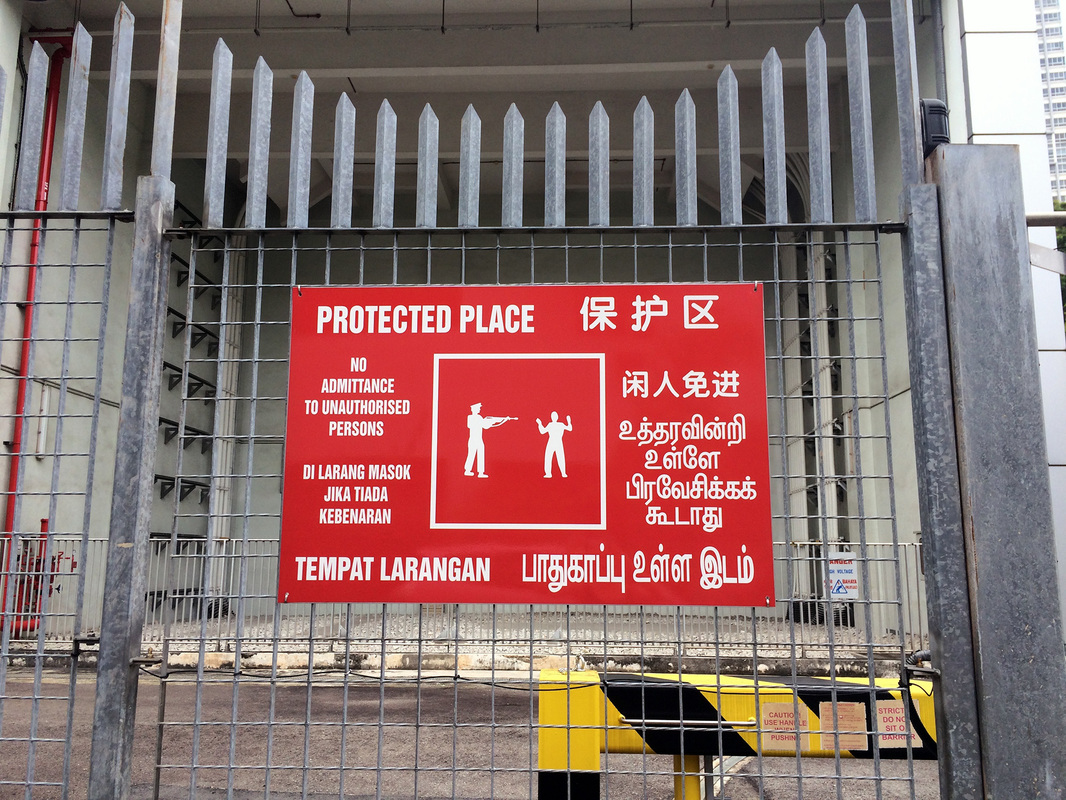
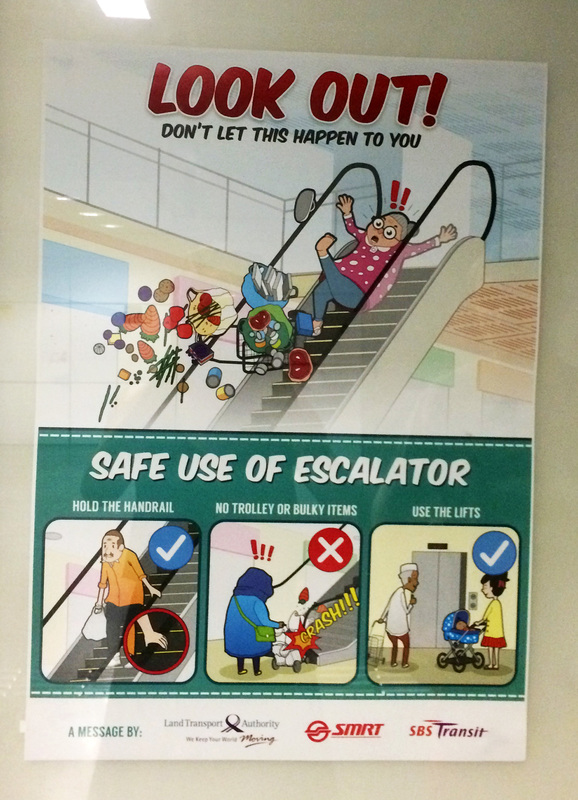
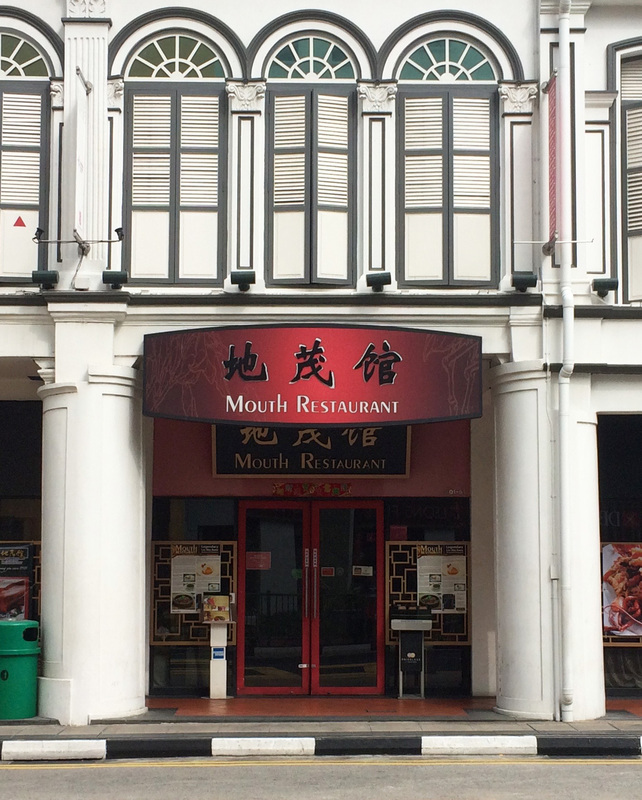
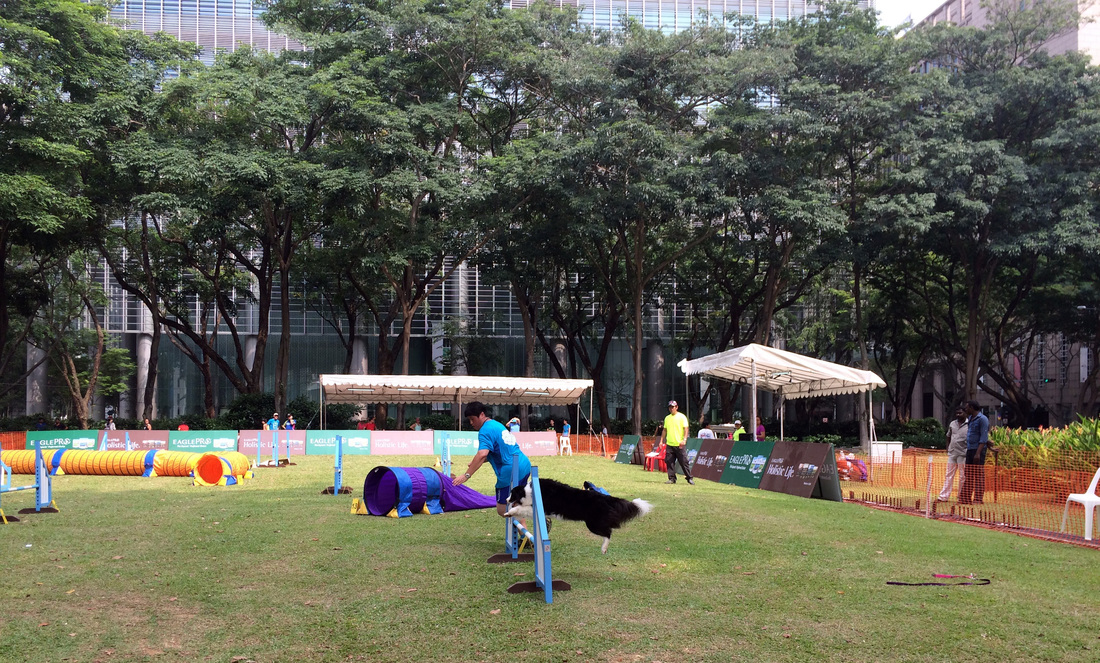
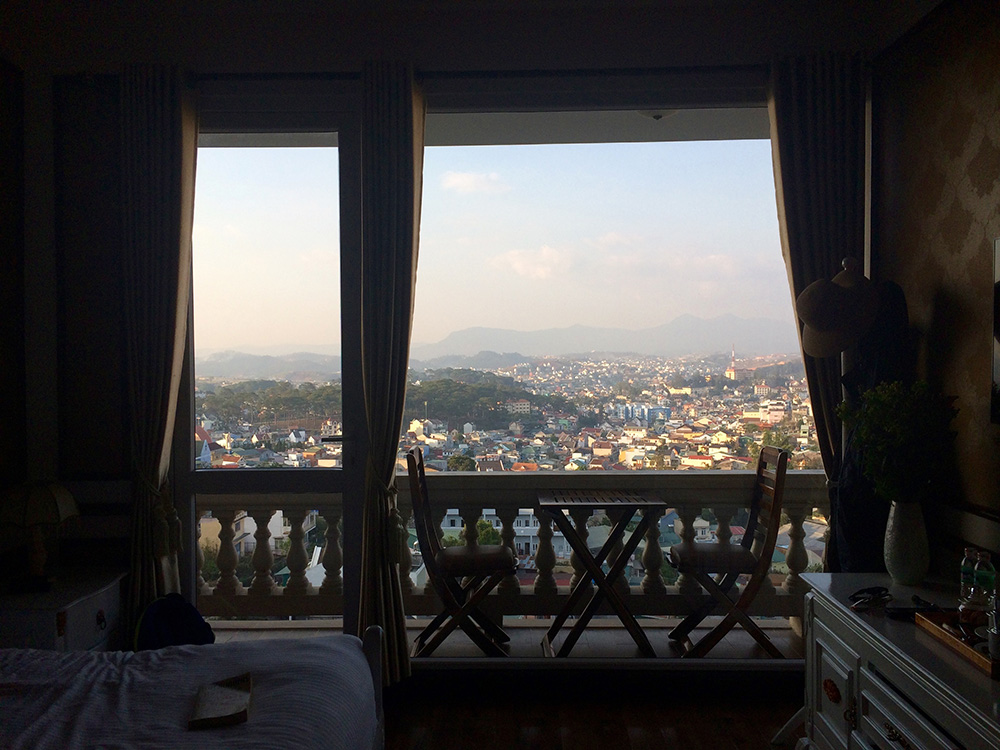
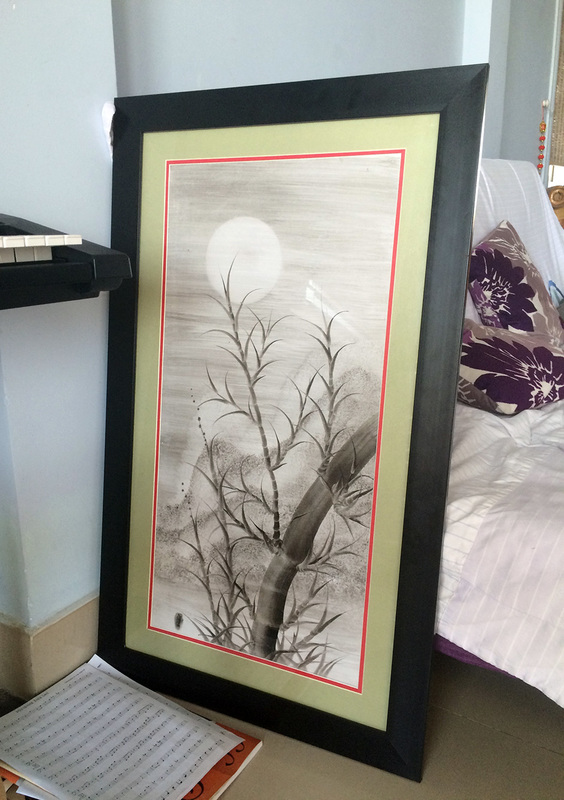
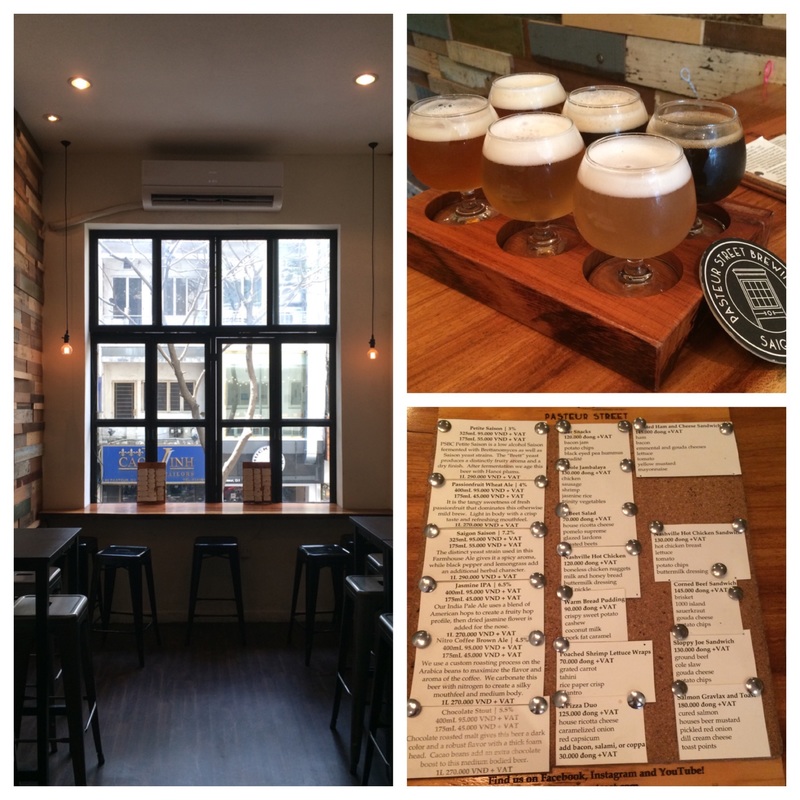
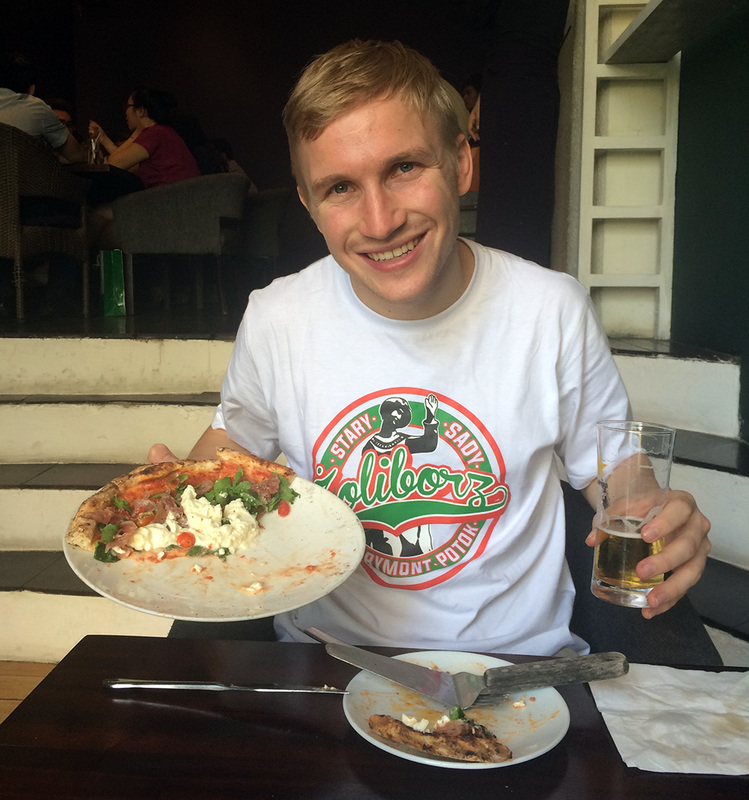
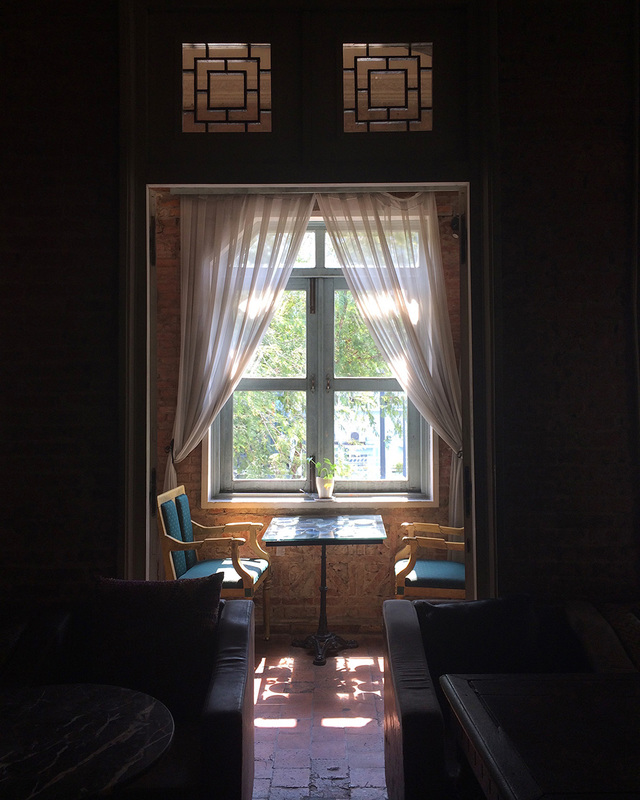
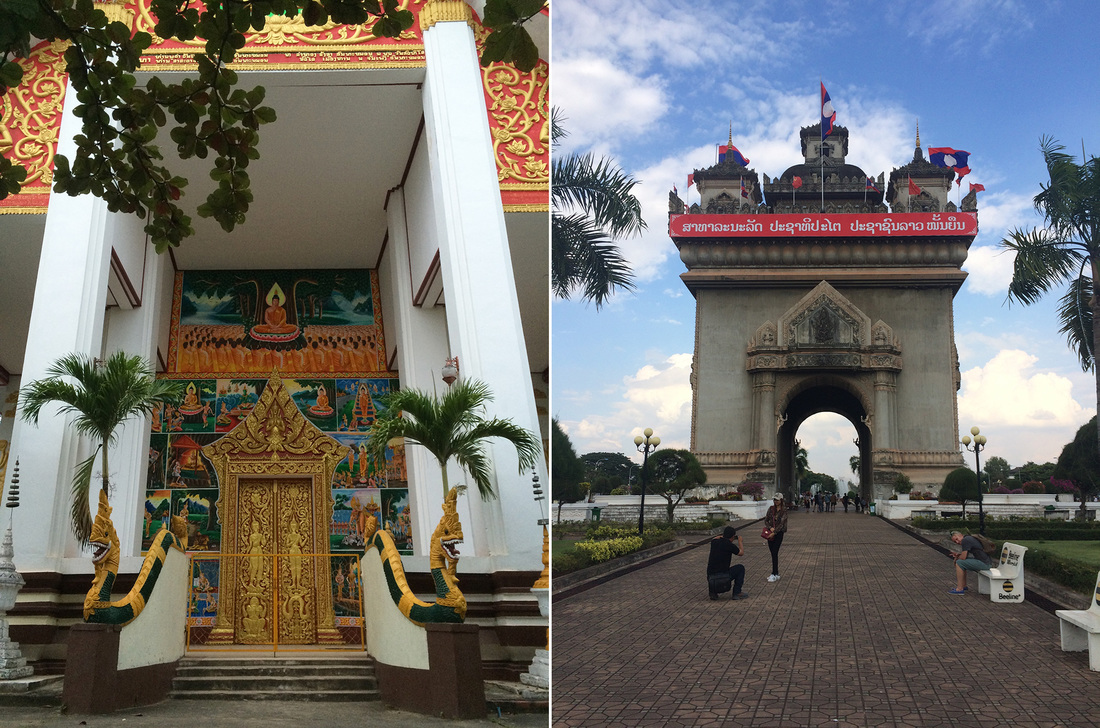
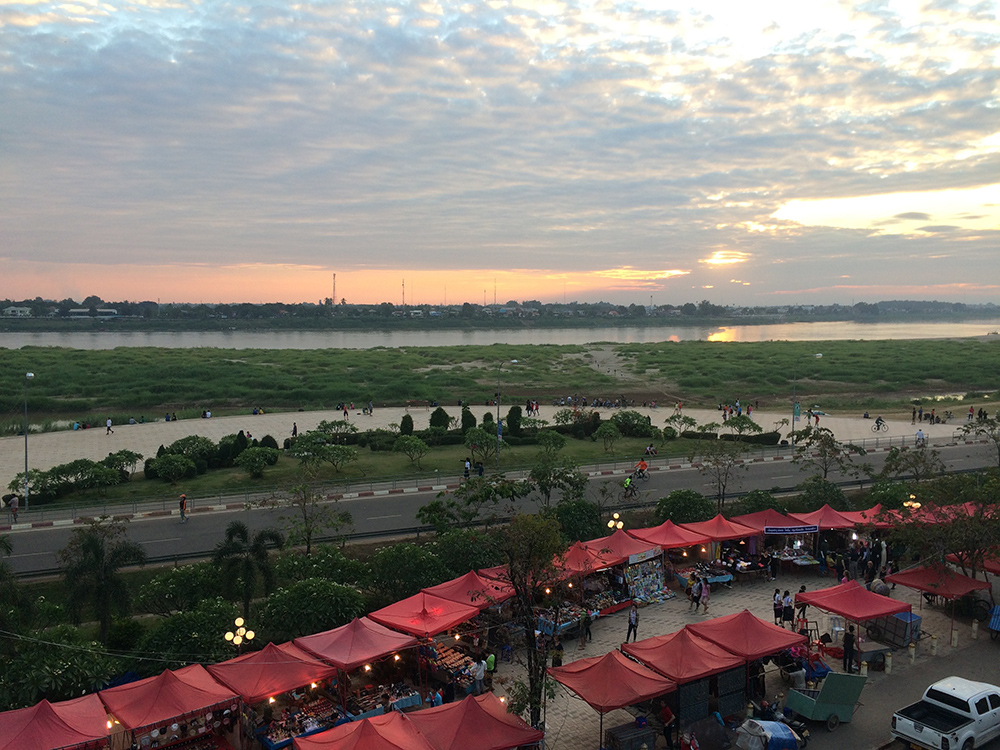
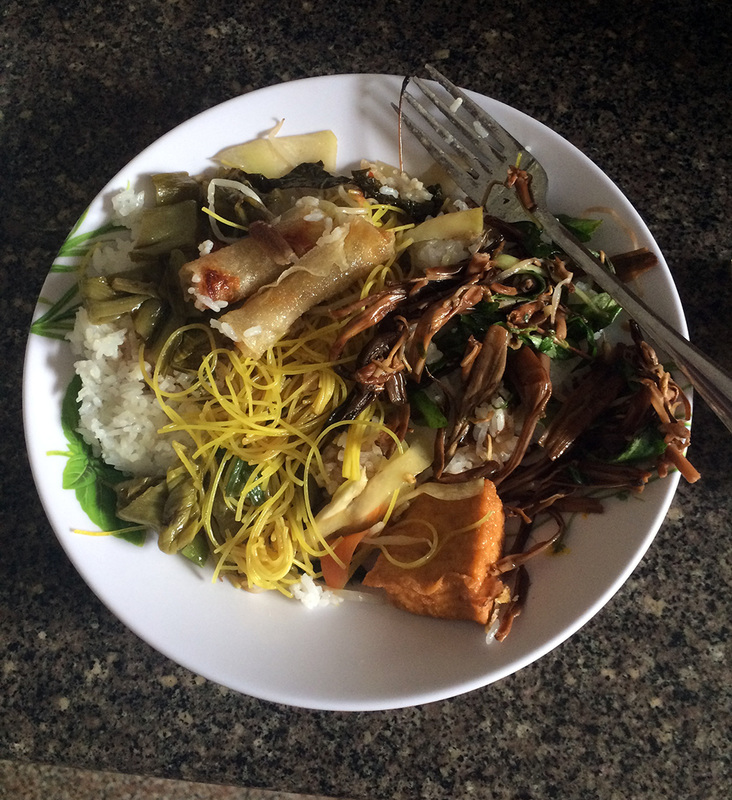
 RSS Feed
RSS Feed